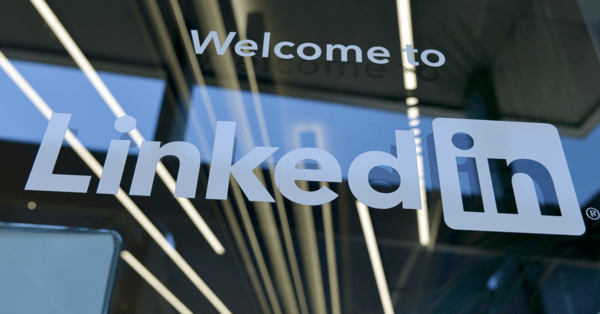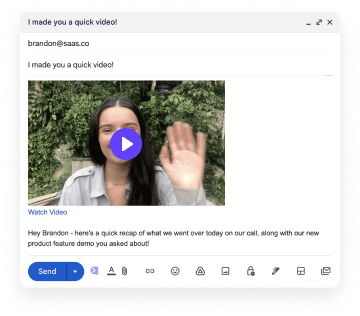When you are looking for B2B leads, there is no better place to look for than a professional network LinkedIn, which has about 75 million senior-level decision-makers.
Even when you are looking for B2C leads, but have to offer a product that can help people with their professional lives, you can use LinkedIn to boost your visitor-to-leads and conversion rates.
LinkedIn offers you tools to target exactly those people whom you believe would benefit the most from your products, so you can use the platform for your marketing and sales endeavors.
There are many ways you can reach people on LinkedIn - some are more effective and some are passe.
We want to share our immense knowledge (that we gathered after a few failed marketing attempts and a great number of successful ones) of what works on LinkedIn considering marketing efforts.
1. Optimize your LinkedIn profile and page
Just like your website, your LinkedIn profile/page will show your potential customers how serious you are while presenting yourself and your brand identity.
Not only that. If you optimize your LinkedIn profile and page well, the LinkedIn algorithm will rank it better and you’ll show up in more searches.
So, how to optimize your LinkedIn account?
LinkedIn profile
The most important parts of your LinkedIn profile that you can customize are:
- Profile photo
- Cover photo
- Headline
- About me section
Profile photo needs to be professional. That means that you shouldn’t put a photo of yourself from your vacation. Make sure to take a photo with a plain background wearing your business clothes.
You should use your cover photo to connect your LinkedIn profile to your company. This “photo” shouldn’t actually be a photo - it should be a designed banner that can show your profile visitors what you do and how you solve your client’s problems. Include your company’s logo and add a sentence that will provoke interest and guide your leads to take action.
The text right under your name is the headline. Think about the text on your cover photo and how would your headline work with that, so you can point out the benefits your clients have with your product.
The About me section should be viewed as a short description of what you do. So, you’ll need to include everything that your website has to offer, but shorter and even more effective:
- Pay attention to the few sentences that any visitor can see before they click “Expand” - that part needs to be very effective
- Make sure to write for those businesses that are your target audience
- Show yourself as the industry authority
- Point out the industry’s pain points
- Show how you solve those pain points by offering references to customer testimonials
- Create a call-to-action
2. Join LinkedIn Groups to spread your influence
LinkedIn groups are where you can connect with other people from your business niche and find out what they are talking about, what bothers them, what are their pain points, how they deal with them, and a lot of other interesting details.
Find the groups in your niche, but don’t post about your company or your products the minute you join the groups. That will only bring you a ban from the group.
Instead, there are a few things you can do so eventually you’ll build up loyalty - other people will start seeing you as an expert in the field and ask you about your opinion when they are not sure what to do in some situations:
- Ask meaningful questions - that will help you find leads, get new ideas for your blog, and find out more details on your target audience.
- Engage with other people’s posts - whenever you can, try to help other people out by answering their questions and offering your experience. Also, like other people’s posts when you truly feel like it.
- Share some useful articles - the articles shouldn’t be from your blog only. You should share other interesting articles, only make sure they are not from your competition.
- Stay human - groups aren’t there only to talk about business. We all face some difficulties while working or while juggling professional and private life. You should sometimes talk about more common topics that are not strictly connected to your business niche.
When your brand is active in a community and has more than 1K followers, you can use new LinkedIn features - LinkedIn Live and LinkedIn Events. That means that you can organize a live stream or a virtual summit when you have an important topic you want to talk about.
3. Use LinkedIn InMail to target potential customers
LinkedIn InMail works similar to traditional email providers, so you can easily send email messages to the targeted audience you choose.
This feature is great, especially if you can’t find a prospect email, so you have to reach them by LinkedIn.
There is a limit on the number of InMails you can send per month, so people don’t get cluttered with messages. To make your message stand out further, you can use Sendspark to send a video message on LinkedIn.
Videos can increase engagement 300% or more. Here's what you need to know to send videos on LinkedIn.
LinkedIn Inmail also offers demographic reporting, so you can track conversations and see details on who reacted to your messages and how they responded.
You can use LinkedIn InMail only if you have a Premium LinkedIn account.
4. Personalize LinkedIn paid ads
Of course, you can use LinkedIn for your ad marketing campaign, too.
The most important thing, as you probably already know, is to do your research and target ads well.
You can use several criteria to narrow down the pool of B2B leads:
- Location
- Company size
- Industry
- Age
- Gender
- Education degree
- Job function / job seniority
- Business niche
When creating an ad on LinkedIn, you can use only 25 characters for the ad headline and 75 characters for the ad body, so you have to be on point and straightforward.
Also, whenever you can, add an image to your ad. LinkedIn says that ads with images have 20% more clicks than those without images.
Another option is to sponsor your content. LinkedIn sponsored content shows up as an organic post on a user’s LinkedIn feed.
5. Matched audiences and CRM integration
LinkedIn has an Ad Targeting tool which has a Matched Audiences feature. You can use this feature for several things, like:
- Upload your list of leads
- Upload your list of contact IDs
- Target specific companies and their employees
- Customize the ad campaign according to the leads’ behavior
This means that you can run highly personalized ad campaigns according to what your leads visited on your website. Also, you can segment your target audiences into groups based on what kind of message you want to send them before you upload the lists of leads.
You can integrate your CRM within the platform, so all leads are directly sent to your CRM and vice versa. This integration will make it possible to send leads segmentations directly into your LinkedIn ads.
Use whatever segmentation criteria fit your needs and make the ad campaigns accordingly.
6. Test, test, test
The sooner you start testing your campaigns, the more details on what works and what doesn’t you’ll have in the future.
You should use A/B testing on your ABM approach so you can find out what works better and use that in the following campaign (or in the next step of your campaign).
How does A/B testing on LinkedIn work?
There are a few simple steps to follow so your testing process is successful:
- Only test one variable (per test)
- Identify the goal you are trying to achieve (more clicks, more conversions, more opens, etc.)
- Make two versions of what you are going to test - two identical versions with only one variable
- Split your target group into two equally numbered groups
- Start your campaign while testing both variations at the same time
- Decide on how long the test is going to last so you can get useful information
- Track and measure the results of the campaign
- Use the results in your next campaign or the next step of your campaign
Once you start A/B testing everything, you won’t be able to stop! Make sure to use a tool that can help you organize and keep all your information, like what you tested, what were the results, graphs, pie charts, etc. all in one place. That way, you won’t get lost in a ton of information you’ll surely have after A/B testing for some time.
Final thoughts on LinkedIn for B2B Marketing
Even though some people see LinkedIn as a place to find a job, the network offers much more than that.
It is a beehive of decision-makers that are proud to show where they work, what they do, and how they do it.
It’s up to you to use that pool and with these great strategies, you’ll be able to identify the people that you can convert, connect with them on a more personalized level, and guide them toward conversion.
About the author: Nina Petrov is a content marketing specialist, passionate about graphic design, content marketing, and the new generation of green and social businesses. She starts the day scrolling her digest on new digital trends while sipping a cup of coffee with milk and sugar. Her white little bunny tends to reply to your emails when she is on vacation.




